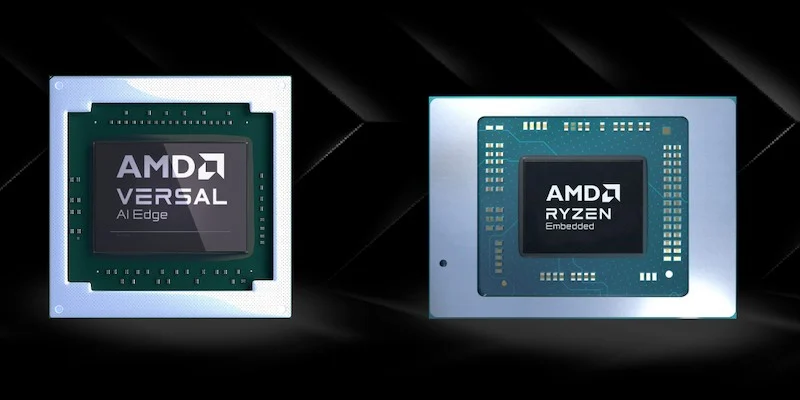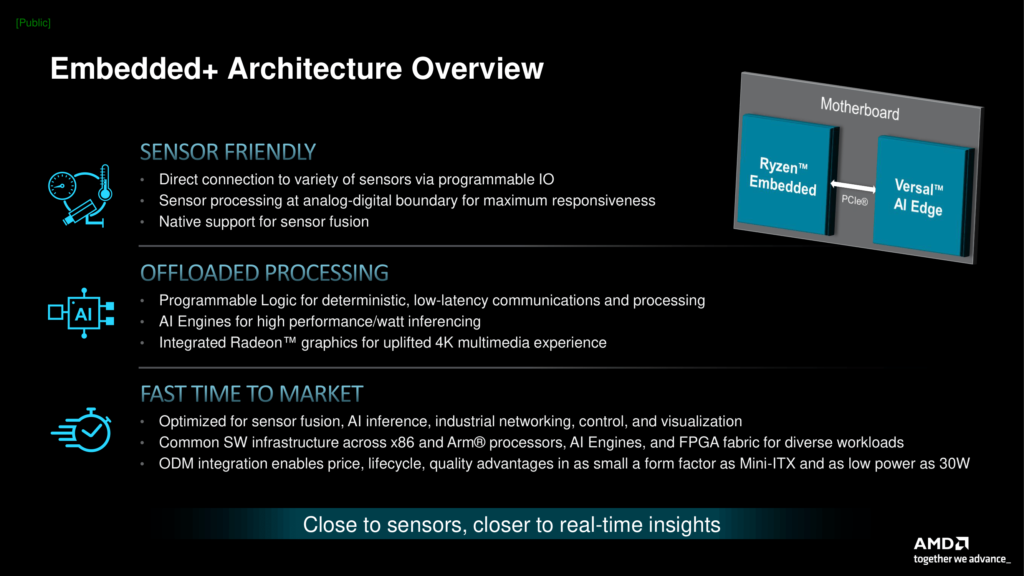
AMD Introduces Embedded+ Architecture for Edge AI Hardware

By Brian K. Neal
Advanced Micro Devices (AMD) has unveiled its latest innovation, the Embedded+ architecture, which integrates AMD Ryzen Embedded processors with Versal adaptive System-on-Chips (SoCs) on a unified integrated board. Engineered as a hybrid of PC processors and Xilinx programmable chips, these chips are designed to empower hardware companies seeking to accelerate power-efficient AI applications, particularly in industrial, medical, smart city infrastructure, and automotive embedded systems.
Chethan Khona, a senior director at AMD, explained during a press briefing that the AMD Embedded+ architecture connects Xilinx-based Versal programmable chips and Ryzen embedded processors via a PCI link on the same motherboard. While original device manufacturers (ODMs) or PC makers develop the end products, this strategic integration reflects one of the motivations behind AMD’s acquisition of Xilinx for $50 billion in 2022. According to Khona, this deal provided AMD with a range of AI engines to enhance edge AI processing in its computing products.
Embedded+ architecture focuses on streamlining the path to integrate data into PCs, facilitating real-time data processing and visualization options from various sources such as discrete sensors or industrial networks. Moreover, it reduces qualification times and accelerates innovations, minimizing time-to-market without requiring additional hardware or research and development (R&D) resources.
Designed to simplify AI inferencing, sensor fusion, industrial networking, control, and visualization, the Embedded+ architecture targets multiple sectors including medical, industrial, and automotive applications. Khona highlighted the critical importance of speed in decision-making for industrial and medical applications, emphasizing Embedded+’s ability to maximize the value of partner and customer data with energy efficiency and performant computing.
AMD’s Embedded+ architecture combines AMD x86 compute with integrated graphics and programmable hardware, offering essential AI inferencing and sensor fusion applications. This amalgamation of adaptive computing for low-latency processing and AI Engines for high-performance inferencing positions Embedded+ as an industry-first solution. The Ryzen Embedded processors, with high-performance “Zen” cores and Radeon graphics, contribute to world-class rendering and display options.
Sapphire Technology, a major player in the ODM ecosystem, has launched the first ODM solution based on the Embedded+ architecture – the Sapphire Edge+ VPR-4616-MB. This low-power Mini-ITX form factor motherboard, driven by the Ryzen Embedded R2314 processor and Versal AI Edge VE2302 Adaptive SoC, offers a comprehensive suite of capabilities at power levels as low as 30 watts. Khona highlighted this as a tangible example of Embedded+ architecture’s potential.
Adrian Thompson, senior vice president of global marketing at Sapphire Technology, emphasized the benefits of working with a validated and reliable compute architecture, enabling the company to focus resources on enhancing other aspects of their products, thus reducing time to market and R&D costs. The Embedded+ qualified VPR-4616-MB from Sapphire Technology is now available for immediate purchase, marking a significant advancement in embedded processing and AI capabilities.
Overall, Embedded+ architecture represents a strategic move by AMD to advance edge AI applications, leveraging the strengths of Ryzen embedded x86 processors and Versal AI edge adaptive SoCs in a single integrated compute platform. This initiative aims to set a benchmark for efficiency and innovation in the semiconductor landscape, propelling forward the development of edge AI applications.







